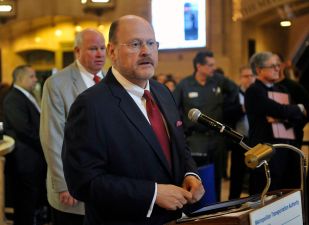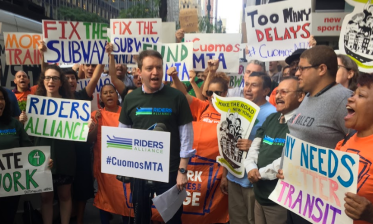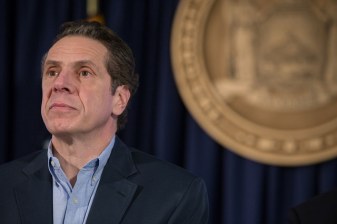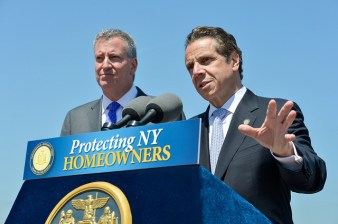Andrew Cuomo’s MTA Propaganda Should Scare the Bejeezus Out of You
The governor and his transit chief, Joe Lhota, spent Thursday abdicating responsibility for the transit system they control.
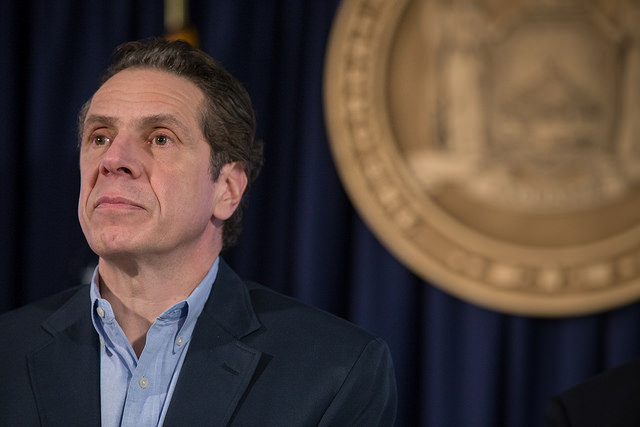
NYC transit service is starting to earn comparisons to the bad old 1980s, and Governor Cuomo wants you to know one thing — it’s not his fault.
Yesterday, Cuomo and his MTA chief, Joe Lhota, came out with a coordinated message: Bill de Blasio should pay more into the MTA capital program.
That’s going to be one of the core recommendations in a report slated for release early next week, one of Lhota’s first major acts in his current stint as MTA chair. It’s also the same note Cuomo’s been sounding for years, but with some added legal sophistry about New York City’s ownership of the subways.
At a hastily convened press conference late in the afternoon, Lhota insisted, “This is not about politics.” But the only explanations for the presser that make sense are political.
Why hold an event that’s ostensibly about recommendations coming out in the next few days? Well, the governor’s poll numbers are dropping as a result of poor transit service, he’s getting battered in the press for spending hundreds of millions of dollars on light shows for the MTA’s bridges, and he needs to change the subject.
One way to change the subject would be to provide some basic assurances that the MTA, under Cuomo and Lhota’s stewardship, is moving quickly to identify how reliable service can be restored. A few sentences that delve a little deeper than “state of emergency” or “top-to-bottom review” could have done the trick.
But that wasn’t the message yesterday, and in the context of the MTA’s current crisis, that’s highly alarming.
The decline of transit service in NYC is, at most, tangentially related to the question of where revenue comes from. Identifying new revenue sources can help prevent future fare hikes by paying for needed improvements without piling on more debt. But the urgent, immediate challenge that Cuomo and Lhota have to address is not the fare. It’s slow service and the growing prevalence of severe delays.
Solving these problems requires taking a hard look at operations and project delivery — making the most of the MTA’s current service capacity while implementing repairs and capacity upgrades as fast and cost-efficiently as international peer transit agencies. In other words, the MTA needs to better manage the resources at its disposal, and that is fundamentally the responsibility of the governor and his chosen chief executive at the agency.
As more than one transit expert has observed recently, a bedrock condition for these reforms is the willingness to openly and honestly assess what’s broken at the MTA. And advocates were encouraged last week when Lhota said the MTA would be publishing a performance dashboard so the public could gauge the agency’s progress on service quality and other metrics.
Now Lhota is pivoting back to Cuomo’s favorite talking point about getting the city to pay more. The message is pure obfuscation, not an open and honest assessment of what has to change at the MTA.
For transit riders, and New York City broadly speaking, that’s a very bad omen. It suggests the governor doesn’t want to spend political capital to fix the transit system he controls. If the subways and buses don’t improve, that’s fine with him, as long as someone else takes the fall.
